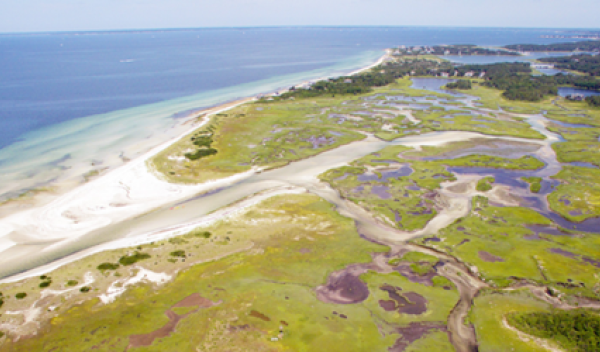Cape Cod’s salt marshes are as iconic as they are important. These beautiful, low-lying wetlands are some of the most biologically productive ecosystems on Earth. They play an outsized role in nitrogen cycling, act as carbon sinks, protect coastal development from storm surge, and provide critical habitats and nurseries for many fish, shellfish and coastal birds.
And, according to new research from scientists at the University of Chicago’s Marine Biological Laboratory, more than 90% of the world’s salt marshes are likely to be underwater by the end of the century.
The U.S. National Science Foundation-supported findings come from a 50-year study of Great Sippewissett Marsh in Falmouth, Massachusetts. The results are published in the journal Science of the Total Environment.
“Salt marshes shape our coastlines and create an ecological foundation for coastal economies both directly and indirectly,” says Francisco (Paco) Moore, a program director in NSF’s Division of Environmental Biology. “The direct impacts of saltmarsh loss would be staggering; the indirect effects may be larger still. These marshes are fundamental to coastal commercial and recreational fisheries and are a living buffer stabilizing our coastlines.”
Since 1971, scientists at MBL have mapped vegetative cover in experimental plots in the marsh to examine whether increased nitrogen in the environment would impact species of marsh grass. Due to the study’s length, they also were able to detect the effects of climate change on the ecosystem, especially those driven by accelerating sea-level rise.
The researchers found that increased nitrogen favored higher levels of vegetation and accretion of the marsh surface, and that no matter what the concentration of nitrogen they applied to the marsh, these ecosystems won’t be able to outpace submergence from global sea-level rise.
“Places like Great Sippewissett Marsh will likely become shallow inlets by the turn of the century,” says Ivan Valiela, lead author of the study. “Even under conservative sea level estimates, more than 90% of the salt marshes of the world will likely be submerged and disappear or be diminished by the end of the century.”
“This is not a prediction from isolated scientists worried about little details. Major changes are going to be taking place on the surface of the Earth that will change the nature of coastal environments.”
Source: News Release

